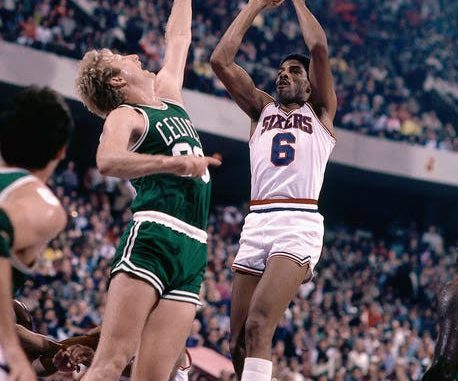
The only player in NBA history to earn MVP, Coach of the Year, and Executive of the Year all in one lifetime is the storied playmaker of the Celtics.
Every generation or so, a player truly deserving of the title of superstar emerges. One player like that was Larry Bird.
Bird was a model of hustle, consistency, and brilliance in every facet of the game throughout his 13 seasons with the Boston Celtics, which ran from 1979–1980 to 1991–1992. He excelled as a scorer, passer, rebounder, defender, team player, and, most importantly, a clutch player. Bird was known to waltz over to the other team’s bench prior to tipoff and forecast a 40-point performance for himself since he exuded such confidence in himself.
remain connected to forever. Few were as tough as Bird, who would jump over press tables and into crowds in search of dropped balls.
Bird embodied the spirit of “Celtics Pride.” He was a sophisticated, self-assured, diligent player who flourished under duress and motivated teammates to achieve success. Similar to Bob Cousy, Bill Russell, John Havlicek, and Dave Cowens, the humble Bird was a player who elicited the best performance from those around him instead than hogging the limelight. However, none of those great athletes filled Boston Garden, thrilling spectators and controlling matches the way that Bird did.
Bird played a significant role in the rebuilding of the Celtics, a team that had struggled with bad play and low attendance in the late 1970s. The Celtics won 10 Atlantic Division titles and three NBA titles with Bird at the center of a well-rounded team. Apart from his trio of championship rings, Bird amassed an incredible array of personal accomplishments. He became the first player to win three straight NBA Most Valuable Player Awards, and only the third player overall. He was also a non-center. In addition to being a 12-time All-Star, he was named to the All-NBA First Team nine times and the NBA Finals MVP twice. Four times, he was the league leader in free-throw percentage.
Nine times selected to the All-NBA First Team, an All-Star, and the two-time MVP of the NBA Finals. Four times, he was the league leader in free-throw percentage.
A devoted perfectionist, Bird was admired by basketball purists of all stripes as well as Celtic supporters. Those who watched his career were always in awe of his incredible last-second heroics, which included anything from apparently impossible reverse layups to amazing 35-foot bombs over several defenders.
In 1992, after winning a gold medal with the first Dream Team at the Olympics in Barcelona, Larry Bird announced his retirement from the NBA due to a debilitating back issue. Commissioner David J. Stern stated of Bird, “Larry has helped define the way a generation of basketball fans has come to view and appreciate the NBA.”
a debilitating back ailment in 1992, following a gold medal win in the Olympics in Barcelona with the first Dream Team.
Nestled in Indiana’s corn land, in the tiny hamlet of French Lick, Bird’s legend began with a simple life led by his family. With 2,059 residents, the majority of them attended Springs Valley High School’s home games. This is a state that takes schoolboy basketball very seriously. The crowd, which frequently topped 1,600, came to see Larry Joe Bird, the blond-haired shooting star with a quirky smile.
After suffering a fractured ankle that ruined his sophomore season, Bird became a star in his junior year. Springs Valley achieved a 19-2 victory, and young Larry rose to local fame. Since Bird’s parents were unable to purchase a car of their own, fans always seemed to be prepared to lend them a ride. Bird became the school’s all-time leading scorer as a senior, and his final home game drew roughly 4,000 spectators.
Bird had a hard time adjusting to college life. Although he was formerly an Indiana Hoosier, he eventually departed the squad and the university under the great Bobby Knight’s coaching. Then he departed Northwood Institute, the junior college in the area. After two unsuccessful seasons at Indiana, a perennial Big Ten power and national title contender, Bird finally enrolled at Indiana State, where the pressure was not quite as great.
In Terre Haute, “Larry Bird Ball” was the most popular sport.
When Earvin “Magic” Johnson of Michigan State, a 6-foot-9 guard, led his team to victory in the 1979 NCAA Championship Game—one of the most watched matchups in basketball history—the Sycamores went undefeated and peaked at No. 1. Bird finished his career at Indiana State as the fifth-highest scorer in NCAA history and was voted the 1978–79 College Player of the Year. Over Bird’s three-year tenure, the Sycamores finished 81-13.
In the hopes that Bird, who had been eligible for the NBA following his junior year, might forego his senior season, the Boston Celtics selected him in the 1978 NBA Draft. However, they also knew that Bird was worth the wait even if he didn’t. The Celtics’ 32-50 record in 1977–78 was their lowest since 1949–50. After Bird decided to stay at Indiana State for an additional season, the Celtics finished 29-53. However, Bird made his way to Boston for the 1979–80 season, which led to one of the most remarkable single-season comebacks in NBA history.
Leave a Reply